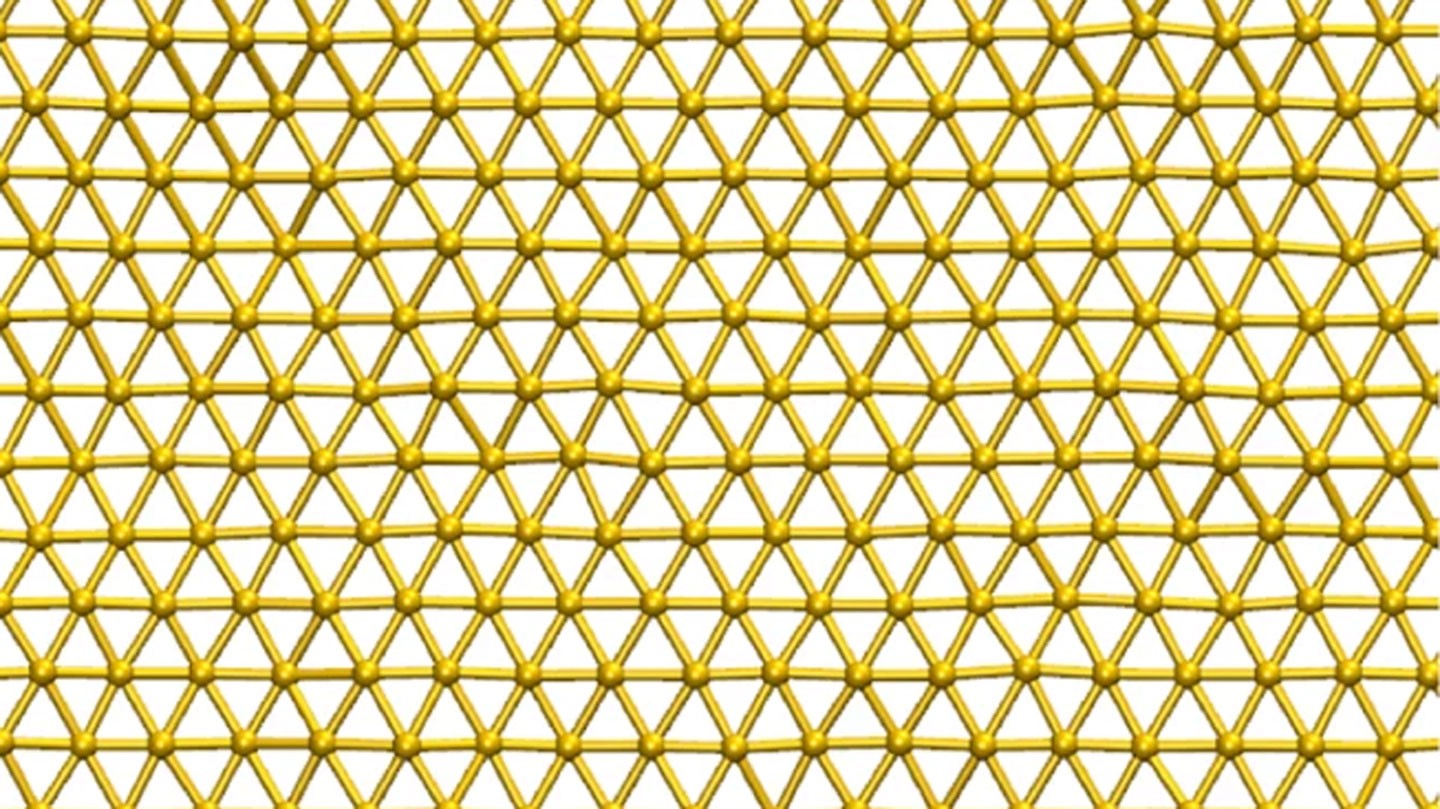GOLDENE

Source: Sciencenews
Disclaimer: Copyright infringement not intended.
Context
- Goldene, a one-atom-thick sheet of gold, represents a remarkable advancement in material science achieved by researchers at Sweden’s Linköping University.
- This development has ushered in a new era of possibilities, positioning gold as the inaugural metal to be fashioned into freestanding two-dimensional (2D) sheets, unlocking a plethora of potential applications.
Details
The Quest for 2D Metals
- While the creation of two-dimensional materials like graphene has been well-documented since 2004, synthesizing metallic counterparts posed significant challenges due to the propensity of metals to aggregate into nanoparticles.
- Goldene, distinguished as the first freestanding 2D metal, marks a milestone achievement in overcoming this obstacle, presenting a novel avenue for exploring the properties and applications of ultra-thin metallic structures.
Development Process
- The fabrication of goldene involved a sophisticated process wherein an atomic monolayer of silicon was interposed between layers of titanium carbide.
- Deposition of gold atoms onto this substrate led to diffusion and replacement of silicon atoms, resulting in the formation of a monolayer of gold atoms encapsulated within the material.
- Subsequent removal of the titanium carbide layers using Murakami’s reagent, a traditional Japanese chemical technique, yielded free-standing, one-atom-thick gold sheets.
Potential Applications
- Goldene exhibits immense potential for catalytic applications owing to its economic viability and enhanced surface area-to-volume ratio compared to bulk gold.
- Its use as a catalyst in electronics holds promise for reducing the quantity of gold required while maintaining optimal performance, thus enhancing cost-effectiveness and sustainability.
- The versatility of the fabrication technique extends beyond gold, with ongoing efforts to synthesize 2D sheets of iridium and platinum, offering opportunities for diverse applications in catalysis and beyond.
Future Prospects
- The distinctive atomic arrangement of goldene, with each gold atom bonded to only six neighbors, endows it with unique properties conducive to various catalytic processes.
- Potential applications span a wide spectrum, including carbon dioxide conversion, hydrogen generation, water purification, and selective production of value-added chemicals, underscoring its significance in addressing global challenges and advancing sustainable technologies.
Must read articles:
Sources:
|
PRACTICE QUESTION Q. Goldene represents a paradigm shift in the realm of materials science, showcasing the transformative potential of two-dimensional metallic structures. Comment. (250 words) |




1.png)
